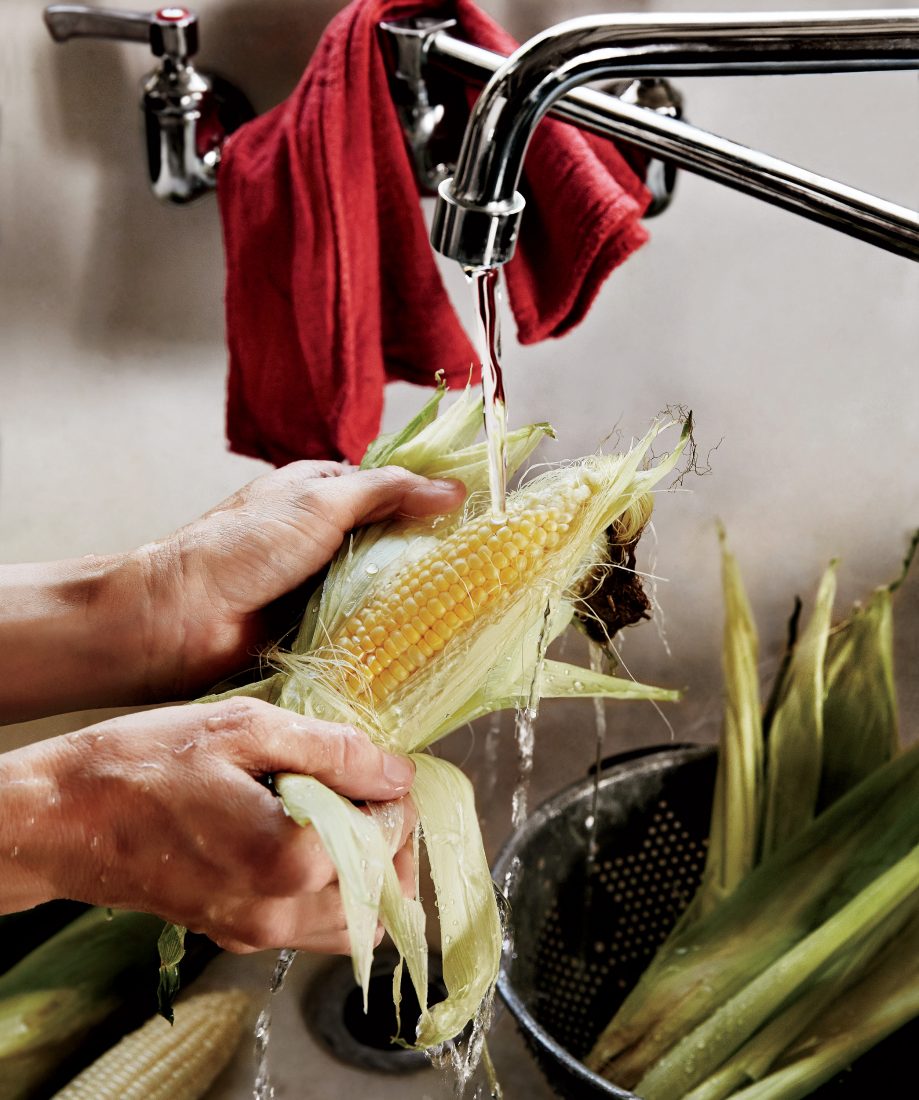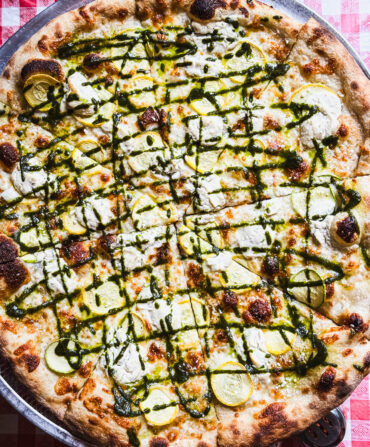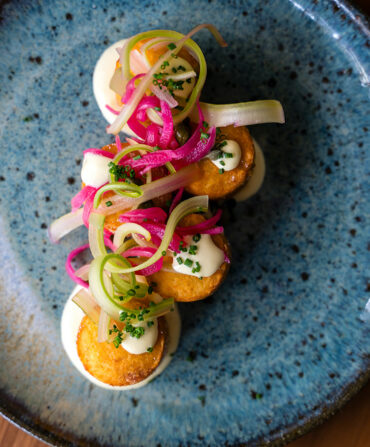“When she asked him what he would like to have special, he had not had the gumption to think of one civilized dish—he had said collard greens.”
—Flannery O’Connor
When I was growing up, it was compulsory for every plate my mother served to offer “something green.”Not literally, of course. “Something green” meant something vegetable-based. Often, something from our yard, at least until we moved to Florida, where the bugs plagued the tomatoes and cukes so tenaciously that Mother would return from the garden, hands thrown up in despair, muttering in colorful language about grubs and DDT and how back in West Virginia she could drop a seed from her pocket and it would grow a Mortgage Lifter tomato as big as a house. (After which she would drive in a snit to the grocery and grudgingly buy tomatoes that tasted like red Styrofoam.) Nonetheless, something green remained a mandate, and on a good day, that something was creamed corn as sweet as pudding, or lima beans that dissolved in your mouth like cotton candy, or scalloped potatoes crisped in the oven by rafts of butter floating in a heavy shake of cream. It is and has always been a particularly Southern gift to make the vegetable as seductive as the meat. Say what you will about fried chicken, pulled pork, meat loaf, country ham, ribs, and the rest—when Southern folks come together around a table, it is the sides they covet most. Not that the meat isn’t appreciated. Just that it pales compared with the three.
Perhaps this is because we do such astonishing things with our vegetables. You will never, in a true Southern restaurant, be served that monstrous, flavorless contrivance known as the “vegetable medley.” In the South, food isn’t frozen. It’s family. As such, every plate offers a marriage of past and present, an edible legacy, always rich, never stuffy. Nowhere is this entanglement of history and ardor more deliciously expressed than in the sides. Sides, of course, being Southern code for vegetables.
What Yankee visitors have misguidedly described as “draining the life from,” Southerners see as reducing to a profound essence. Take my mother’s pole beans. My sisters and I would snap them at the table, their interior seeds popping out like lost teeth. The cleaned beans would join a boiling pot stuffed with ham hocks and white onion and bacon fat from our tin under the sink, and there they would simmer until their stringiness relented and they became as slick and soft as briny tapioca, tearing like tissue under the weight of your fork. I used to sink my beans into the mashed potatoes inevitably plunked by their side, the salt of the seductively limp bean a boon to the cream of the mash. I’m sure there was protein on my plate, too. I just don’t remember it.
The Atlanta-based chef Steven Satterfield, known among his peers as the Vegetable Whisperer, recalls how during childhood visits to his grandmother Ducky’s house in Asheville, North Carolina, meals were often served sans meat. “One of Ducky’s talents was the ability to gently coax the flavors out of vegetables with very little manipulation,” he says. “She was a produce queen.” At Satterfield’s farm-centric Miller Union restaurant, he serves Ducky’s icebox pickles and chowchow, among other recipes. “I think of her when I cook and picture her guiding me. I hold the vegetables, think about how they were grown and cared for. I feel like if you pay attention, the produce will almost tell you what it wants to be and how it should be cooked.”
It is of no small import that vegetables can be handled. They are not cheese or sauce or delicate berries in need of onerous, precious containers. Vegetables are hardy, stable, tactile wonders that you can gather in your arms or heap into your apron, food you can nibble plucked straight from the earth, or toss into brown paper sacks and lug home to spill atop your counter in a riot of possibilities. Vegetables define organic connection. When you watch your meal evolve from seed to sprout to plate, it transcends craving. It becomes a relationship. One that in the South, we are fortunate to cultivate more months of the year than not.
“The idea of side dishes, the beauty of vegetables, is core to the truth of Southern food,” observes Georgia chef Hugh Acheson. “At the end of the day, we are nothing without knowledge of our own backyard.”
At home, my daughters clamor as much for hoppin’ John and butter beans as for dessert. When they think of home-cooked meals, they are not imagining the main course. Unless the main course is macaroni and cheese. Which, as any Southerner will tell you, counts as a vegetable too.








